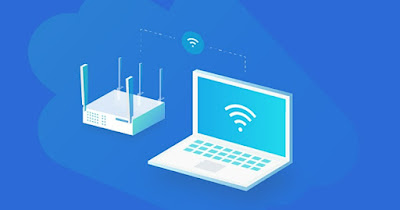Our computer does not connect to the 5 GHz Wi-Fi network? Let’s see how to solve this problem on desktop PCs and notebooks

When we connect a PC to a new Wi-Fi network we prefer that it immediately connects to the 5 GHz Wi-Fi network, so as to immediately take advantage of the maximum Internet connection speed (which cannot be achieved with the classic 2.4 GHz network).
Unfortunately not all computers see the 5 GHz connection right away, even on PCs that have a Wi-Fi network compatible with Dual Band networks. In these cases it is possible to solve the problem through some configurations or by changing the PC network card.
READ ALSO -> How to add wifi to a desktop PC
1) Check Wi-Fi transmission channel
If we have access to modem settings or the router to which we should connect it is worth checking the transmission channel on the 5 GHz band, given that some channels are not viewable on devices (even if selectable on the modem).
To check we access the Wi-Fi or Wireless section of the Wi-Fi modem or router, select the menu Radio channel or similar, we select Wi-Fi 5, Wi-Fi 5 GHz o IEEE 802.11ac and we select Automatic channel, Channel 36, Channel 44, Channel 56 o Channel 104considered the most compatible with any type of device capable of using 5 GHz.
To learn more we can read our guide on how to change Wi-Fi channel on your modem.
2) Separating them Dual Band reti
Another problem that can cause failure to connect to the 5 GHz network is the presence of the so-called unified Wi-Fi network: under the same network name there are both the 2.4 GHz network and the 5 GHz network, leaving the modem with the burden of connecting to one or the other based on distance.
To avoid this problem and connect only to the 5GHz network, open the modem settings again, go to the Wi-Fi connection settings and activate Divide network by band, Band separation o Different names for Wi-Fi networks on the 2.4 and 5 GHz bands.
After activating this item let’s make sure to use a slightly different name for the 5 GHz network but still easily associated with our modem (if we used Home-WiFi we can use for the second network Home-WiFi-5G); in the settings for the second network remember to use the same access password.
By doing this, when we connect a new device to our modem, we will never be able to make a mistake when connecting to the 5GHz network, since it will appear with a different name.
To learn more we can read our guide on how to activate a second WiFi network to improve connection stability.
3) Check the functioning of the Wi-Fi network card
If the 5 GHz Wi-Fi network is visible but we cannot connect in any way, it is best to check the settings of our network card, resetting all the settings and starting the dedicated Windows recovery tool.
To proceed on Windows 11 we press WIN+I on the keyboard, let’s get on the path System -> Troubleshoot -> Other troubleshooters and press the Run button next to the item Network and Internet.
On Windows 10 the path is slightly different: let’s go to Settings -> Update & Security -> Troubleshootwe press on the item Additional troubleshooting tools and launch the tools Internet connections e Network card.
To completely restore the connections and network cards we can also go to the menu Network and Internet -> Advanced network settingsclick on Network reset and finally press on Restore.
On the same topic we can read our guide on how to restore network and web browsing if your PC is not connected to the internet.
4) Check 5 GHz Wi-Fi network compatibility
We’ve tried everything but we can’t see the name of the 5GHz Wi-Fi network? Having established that the network in question works and is visible from other devices in the same house (such as the Android phone, the iPhone or the Smart TV) we must make sure that the PC you are using actually supports the 5 GHz network.
To perform this simple check, right-click on the Start menu and press on Terminal about are Windows PowerShell (depending on the operating system in use) and type the following command:
netsh wlan show drivers
In the list of information that will appear, let’s go to the item Number of bands supported and check that the voice is present 5 GHz.
If this item is not present, our PC or notebook is not compatible with 5 GHz Wi-Fi networks; fortunately we can remedy this immediately by purchasing a 5 GHz Wi-Fi USB adapter (for desktop PCs and notebooks) or one Internal 5 GHz Wi-Fi network card (for desktop PCs).
If, however, we have 5 GHz support but cannot connect, it is worth uninstalling the network card driver and reinstalling it, as seen in our guides on how to download the network card driver to install on Windows PC come on How to fix Wi-Fi problems that often disconnect or go intermittently.
Conclusions
Connection to the 5 GHz Wi-Fi network it is less subject to interference from nearby networks and allows you to reach the maximum speeds expected from our Internet line. Even if this is the fastest network we can activate on the modem, it must be considered due to its poor coverage: we will hardly be able to cross a room, even in the best signal conditions.
To cover your entire home or office with the 5 GHz signal you need to use Mesh Wi-Fi or a Range Extender network, as seen in our guides on how to take Wi-Fi where it doesn’t work with Wi-Fi Mesh and on best 5 GHz WiFi repeaters, to increase internet coverage.
